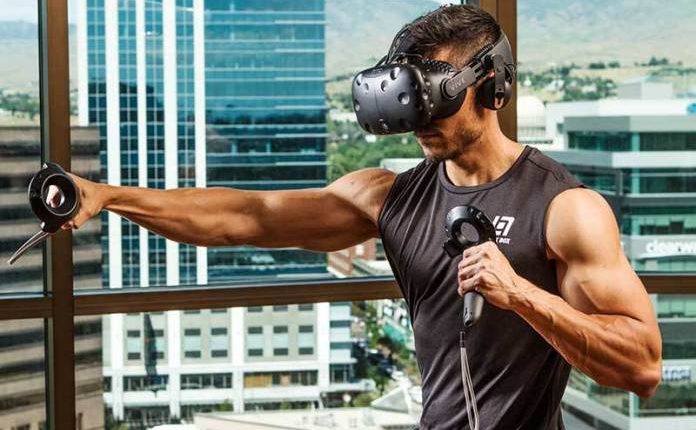Tips on how to Add VR to Your Established Train Routine
VR is a great way to get people who don’t like the idea of exercising to get fitness gains, but what about the rest of us? I love to run, bike and swim. For me, one of the main benefits of VR fitness was being able to prepare for these activities after a 10 month layoff period without having to cut my teeth again because I am an out of shape runner / cyclist / swimmer. Now that I can get back into these activities with relative ease, I do, but VR still has a valued place in my regime.
Here are some ways I can incorporate VR fitness into my existing training plan.
Use VR as a fallback
When I run or ride my bike, I do it outdoors. Running on a treadmill or cycling on a recumbent bike is just not the same enjoyment for me as on the trails. Of course, the weather doesn’t always cooperate and with the coming winter my days of outdoor training are fading. When rainy days or bad weather conditions keep me indoors, VR fitness is the best way to still have fun and maintain my condition at the same time without feeling that I am satisfied with an unworthy replacement.
Have a special VR practice day
I currently do strength training two days a week and try to run, bike, and swim an additional three days. One day is for VR (until the weather changes). I see VR as another sport that I train for and I give it the same priority as my other sports. While with running, biking, and swimming my metrics for improvement are longer distances or better times, VR has its own unique criteria for progression. There are more knockouts in The Thrill of the Fight, a higher wave in Holopoint and the leaderboards in Hot Squat. Every good VR fitness game has something that I can improve, and my goal is to get a little better every week.
Just do 20 minutes
When I have the time, just walking or cycling for 20 minutes isn’t very satisfying for me. Sure, I could do 20 minutes of HIIT and get a great workout, but I absolutely hate HIIT. If I only have 20 minutes to swim, forget about it. Half of that time is spent arriving at the gym and changing in the locker room. On the contrary, 20 minutes is enough time to do some great VR training. In fact, games like Soundboxing or Bitslap can look a lot like HIIT sprints unless I’m actually having fun.
Use VR as an active recovery workout
The benefits of active recovery training are obvious, but many of us don’t look forward to it. If you’re anything like me, you’re probably just skipping days of active rest. VR offers a litany of fantastic, lower-intensity experiences like Fruit Ninja, Holoball, Superhot, and Drunkn Bar Fight, and the list just goes on and on. Trust me, when you use it this way you will never be afraid to actively relax again.
Avoid overload injuries
One of the reasons I try to do various fitness activities is to avoid getting overuse injuries, which I am very prone to. Golfer’s elbow, jumper knees, IT band syndrome; I have had them all. If you’re the type of guy who just runs, just rides a bike, or just plays a sport, you are at risk of an overuse injury from doing the same repetitive movements over and over. There’s nothing worse than being forced to take extended breaks to recover when rest is the only viable solution to your predicament. VR Fitness is a great way to vary your movement patterns and give your connective tissue some relief. Take a day off to do VR fitness instead. It will work wonders.
Let me be the first to tell you that VR Fitness isn’t just for people who don’t have a specific fitness habit. For fitness enthusiasts, it can be combined with an existing routine as a supplement or replacement with great effect.
How have you incorporated VR fitness into your fitness lifestyle? Does it make you a better athlete? Let us know in the comments below!
Follow us on social
Stay up to date with the latest VR fitness news
This article may contain affiliate links. When you click on an affiliate link and buy a product, we may receive a small commission to help publish it. More information here.


Comments are closed.